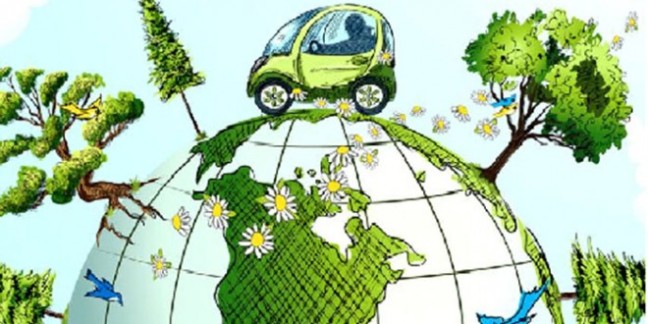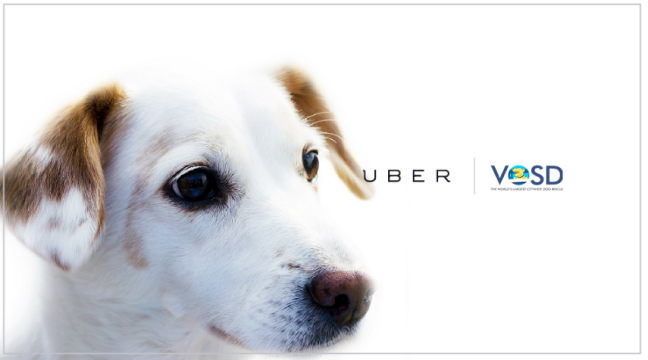
(Image by Self-Balance Electric Unicycle.com)
It is a fact that sharing economies are growing much faster than traditional sectors because in 2016, I used my smartphone for food, transportation, pet-care, lodging, socializing, paying bills and shopping. How cool is that? But I also believe that Transportation Network Companies (TNC) are doing more than what I mentioned above. TNC’S are saving lives and the planet.
Today, half of the world’s population lives within an urban area. It is predicted that by 2020, 20.4 million Americans will utilize some kind of sharing economy service for transportation. The shift in the way we commute, shop, and rent today has brought an awareness to ecological, societal, and developmental impact. If you live in an urban area now it is highly possible to be safe, live life fully, be environmentally aware, and car-less. However, it is impossible not to be aware of the city’s congested and polluted gridlock systems.
Having the option to use TNC’s a.k.a Uber, Lyft, Sidecar, Divvy, or Via/ vs. driving home intoxicated can save lives. A recent new study analyzed 150 cities and counties within a three year period found that all ride sharing options are best for personal safety because it reduces traffic deaths and DUI arrests (reducing DUI arrests between 15 – 62 percent). In rural and urban cities one can participate in libations now without worrying about operating a vehicle. Uber promotes this claim on their page by stating “each drunk driver that is replaced by a safe, professional, and sober partner on Uber’s platform represents a considerable contribution to the welfare of Chicago.” Last year, Mayor Rahm Emmanuel launched “Vision Zero Chicago”. The mission is:
“a strategy to eliminate all traffic fatalities and severe injuries, while increasing safe, healthy, equitable mobility for all. First implemented in Sweden in the 1990s, Vision Zero has proved successful across Europe — and now it’s gaining momentum in major American cities.”
I also believe that another reason why more people are ride sharing today is due to environmentalism. Gas consumption in 2014 was at it lowest. Since a vast majority of households do own cars, car owners now have the opportunity to earn income through car sharing. Car sharing enables “people to get around easily.” And according to a study by AlixPartners, reported on Bloomberg News in 2014: ”for every vehicle that is used in a carsharing fleet, automakers will loose 32 vehicle sales”. A current hypothetical theory about car sharing mobility and environmentalism is that car-less people are living closer to growing cities like Chicago with location-based technologies and will only use the car sharing option when needed, thus subconsciously reducing CO2 emissions while protecting natural forests and wilderness areas. The Natural Resource Defense Council (NRDC) reported last year that “there is very little research that ride-sourcing TNC’s are more environmentally friendly than public transit”… and this is where I want to begin my research paper. I want to focus on environmentalism and safe mobility in Chicago.
References:
13. THE RISE OF THE SHARING ECONOMY (n.d.): n. pag. Web.”What Is Vision Zero?” Vision Zero Network. N.p., n.d. Web. 17 Feb. 2017.
“DUI Rates Decline in Uber Cities.” Illinois. N.p., 05 May 2014. Web. 17 Feb. 2017.
Hamari, Juho, and Antti Ukkonen. “The Sharing Economy: Why People Participate in Collaborative Consumption.” SSRN Electronic Journal (n.d.): n. pag. Web.
“How Much More Can Ride-Sharing Services Grow in the US?” EMarketer. N.p., 17 May 2016. Web. 17 Feb. 2017.
Issue Brief January 25, 2016. “First and Last Mile Connections: New Mobility.” NRDC. N.p., 15 Dec. 2016. Web. 17 Feb. 2017.
Sam Schwartz / Salon. “This Is the One Change by Millennials That Will Change Absolutely Everything.” Alternet. N.p., n.d. Web. 17 Feb. 2017.
Technology. “Study: Ride-Sharing Reduces Traffic Deaths And DUI Arrests.” The Federalist. N.p., 16 June 2016. Web. 17 Feb. 2017.
“What Is Vision Zero?” Vision Zero Network. N.p., n.d. Web. 17 Feb. 2017.
“Why Cabs and Car-sharing Are Good for the Environment.” Grist. N.p., 21 Mar. 2014. Web. 17 Feb. 2017.
“Woes of Megacity Driving Signal Dawn of ‘Peak Car’ Era.” Bloomberg.com. Bloomberg, 24 Feb. 2014. Web. 17 Feb. 2017.


 Back Seat Driver founder Anthony Ponce
Back Seat Driver founder Anthony Ponce

You must be logged in to post a comment.